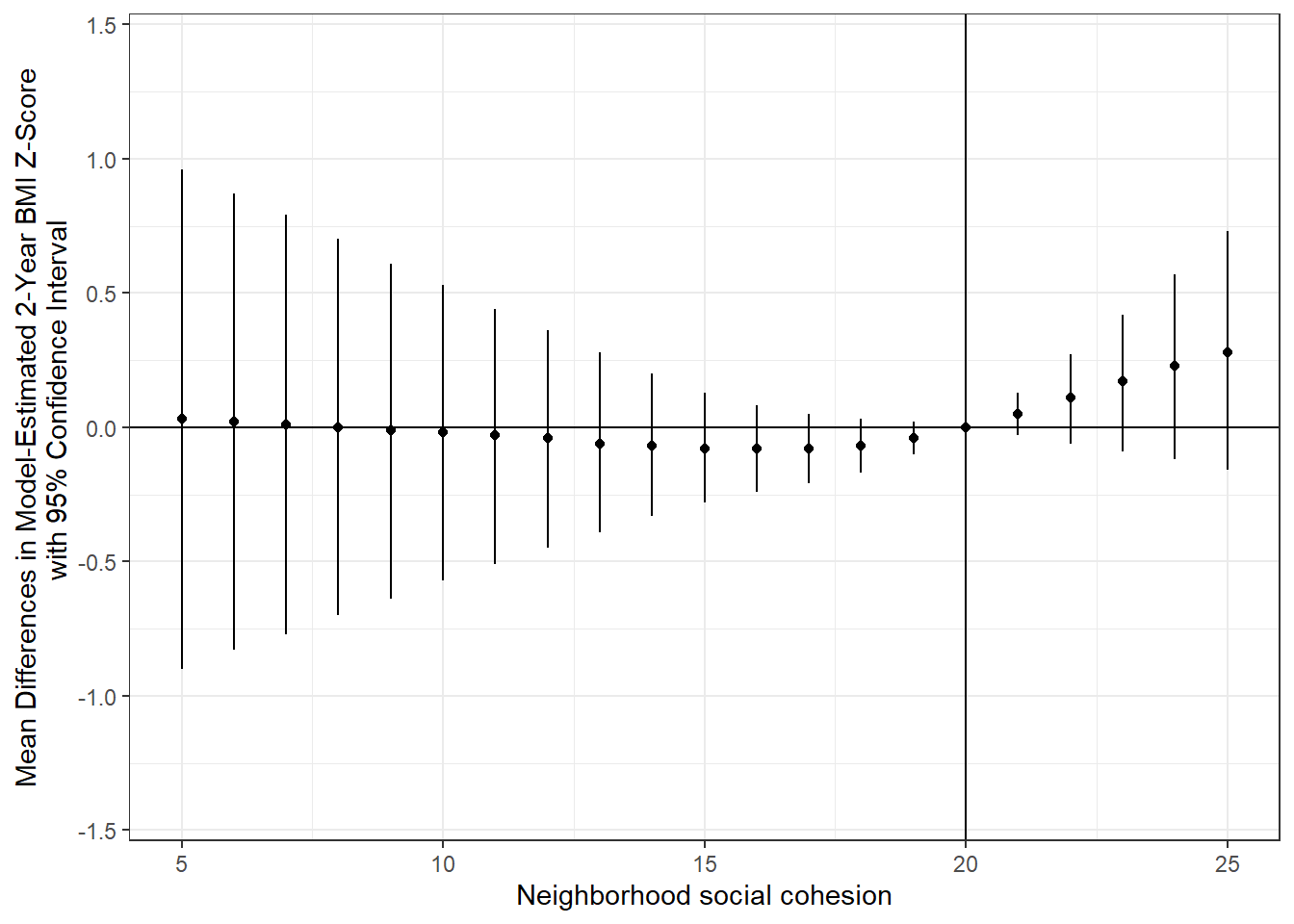Obesity 2
Session: Obesity 2
292 - Social Capital in Families with Newborns and Child Body Mass Index at Age Two Years
Sunday, April 27, 2025
8:30am - 10:45am HST
Publication Number: 292.6672
Jennifer O. Lambert, Johns Hopkins University School of Medicine, Baltimore, MD, United States; Jonathan Schildcrout, Vanderbilt University School of Medicine, Nashville, TN, United States; Shelby Wallace, Monroe Carell Jr. Children's Hospital at Vanderbilt, Nashville, TN, United States; Kori Flower, University of North Carolina at Chapel Hill School of Medicine, Chapel Hill, NC, United States; Shonna Yin, NYU Grossman School of Medicine, New York, NY, United States; Lee Sanders, Stanford University School of Medicine, Palo Alto, CA, United States; William Heerman, Vanderbilt University Medical Center, Nashville, TN, United States; Russell Rothman, Vanderbilt University Medical Center, Nashville, TN, United States; Alan Delamater, University of Miami, Miami, FL, United States; Charles Wood, Duke University School of Medicine, Durham, NC, United States; Eliana M. Perrin, Johns Hopkins University Schools of Medicine, Nursing, and Public Health, Baltimore, MD, United States; Melissa C. Kay, Wake Forest School of Medicine of Wake Forest Baptist Medical Center, Winston-Salem, NC, United States

Jennifer O. Lambert, MD, MHS (she/her/hers)
General Academic Pediatrics Fellow
Johns Hopkins University School of Medicine
Baltimore, Maryland, United States
Presenting Author(s)
Background: Social capital may represent a protective factor against pediatric obesity in families with young children. Our prior analysis observed an inverse association between social capital and household food insecurity for families with young children. Food insecurity is associated with pediatric obesity. However, few studies have examined the association between social capital and early childhood weight, and those studies that have are not diverse.
Objective: To examine the association between two measures of social capital among families with newborns (caregiver social support and neighborhood social cohesion) and child body mass index (BMI) z-score at age 2 years in a racially, ethnically, and geographically diverse sample of US families with young children.
Design/Methods: We analyzed two measures of social capital in families with healthy newborns from six sites across the country enrolled in the Greenlight Plus pediatric obesity prevention comparative effectiveness trial. Caregiver social support was measured using the ENRICHD Social Support Instrument in the newborn period and neighborhood social cohesion was measured using the social cohesion scale in the newborn period, with higher scores indicating more support. Child BMI z-score was measured for the enrolled child at age two years. We used two linear regression models to characterize the relationship between caregiver social support in the newborn period and child BMI z-score at age two years (model 1), and neighborhood social cohesion in the newborn period and child BMI z-score at age two years (model 2). Both models controlled for annual household income, child birthweight, enrollment site, intervention arm of the parent study, caregiver age, educational attainment, race and ethnicity.
Results: A total of 663 healthy newborns and their caregivers (52.8% Hispanic, 24.3% non-Hispanic White, 16.3% non-Hispanic Black, and 6.6% other or multiple races; 48.1% with annual household incomes <$50,000) were included in the sample. There was no significant relationship between caregiver social support in the newborn period and child BMI z-score at age two years as shown in Figure 1 (p=0.30) or neighborhood social cohesion in the newborn period and child BMI z-score at age two years as shown in Figure 2 (p=0.60).
Conclusion(s): Contrary to our hypothesis, caregivers’ social support and neighborhood social cohesion during their children’s newborn periods were not associated with their children’s BMI at age 2 years in a diverse sample of US families. Further research is warranted to understand the relationship between social drivers of health and pediatric obesity.
Table 1- Sociodemographic Characteristics of the Sample in the Newborn Period (n=663)
.png) Values are n (%) for categorical variables and mean (standard deviation) for continuous variables.
Values are n (%) for categorical variables and mean (standard deviation) for continuous variables.Figure 1- The Association Between Caregiver Social Support in the Newborn Period and Child Body Mass Index at Age Two Years
.png) Figure 1 shows the difference calculated by subtraction of a mean model-based estimate of BMI z-score at 2 years when caregiver social support is 30 (reference value depicted with a vertical line) from each model-based estimate in the range of Caregiver Social Support (6-30). There was no significant association between caregiver social support in the newborn period and child BMI at age two years after controlling for annual household income, child birthweight, enrollment site, intervention arm of the parent study, caregiver age, educational attainment, race and ethnicity.
Figure 1 shows the difference calculated by subtraction of a mean model-based estimate of BMI z-score at 2 years when caregiver social support is 30 (reference value depicted with a vertical line) from each model-based estimate in the range of Caregiver Social Support (6-30). There was no significant association between caregiver social support in the newborn period and child BMI at age two years after controlling for annual household income, child birthweight, enrollment site, intervention arm of the parent study, caregiver age, educational attainment, race and ethnicity. Figure 2- The Association Between Neighborhood Social Cohesion in the Newborn Period and Child Body Mass Index at Age Two Years
 Figure 2 shows the difference calculated by subtraction of a mean model-based estimate of BMI z-score at 2 years when Neighborhood Social Cohesion is 20 (reference value depicted with a vertical line) from each model-based estimate in the range of Neighborhood Social Cohesion (5-25). There was no significant association between neighborhood social cohesion in the newborn period and child BMI at age two years after controlling for annual household income, child birthweight, enrollment site, intervention arm of the parent study, caregiver age, educational attainment, race and ethnicity.
Figure 2 shows the difference calculated by subtraction of a mean model-based estimate of BMI z-score at 2 years when Neighborhood Social Cohesion is 20 (reference value depicted with a vertical line) from each model-based estimate in the range of Neighborhood Social Cohesion (5-25). There was no significant association between neighborhood social cohesion in the newborn period and child BMI at age two years after controlling for annual household income, child birthweight, enrollment site, intervention arm of the parent study, caregiver age, educational attainment, race and ethnicity.
